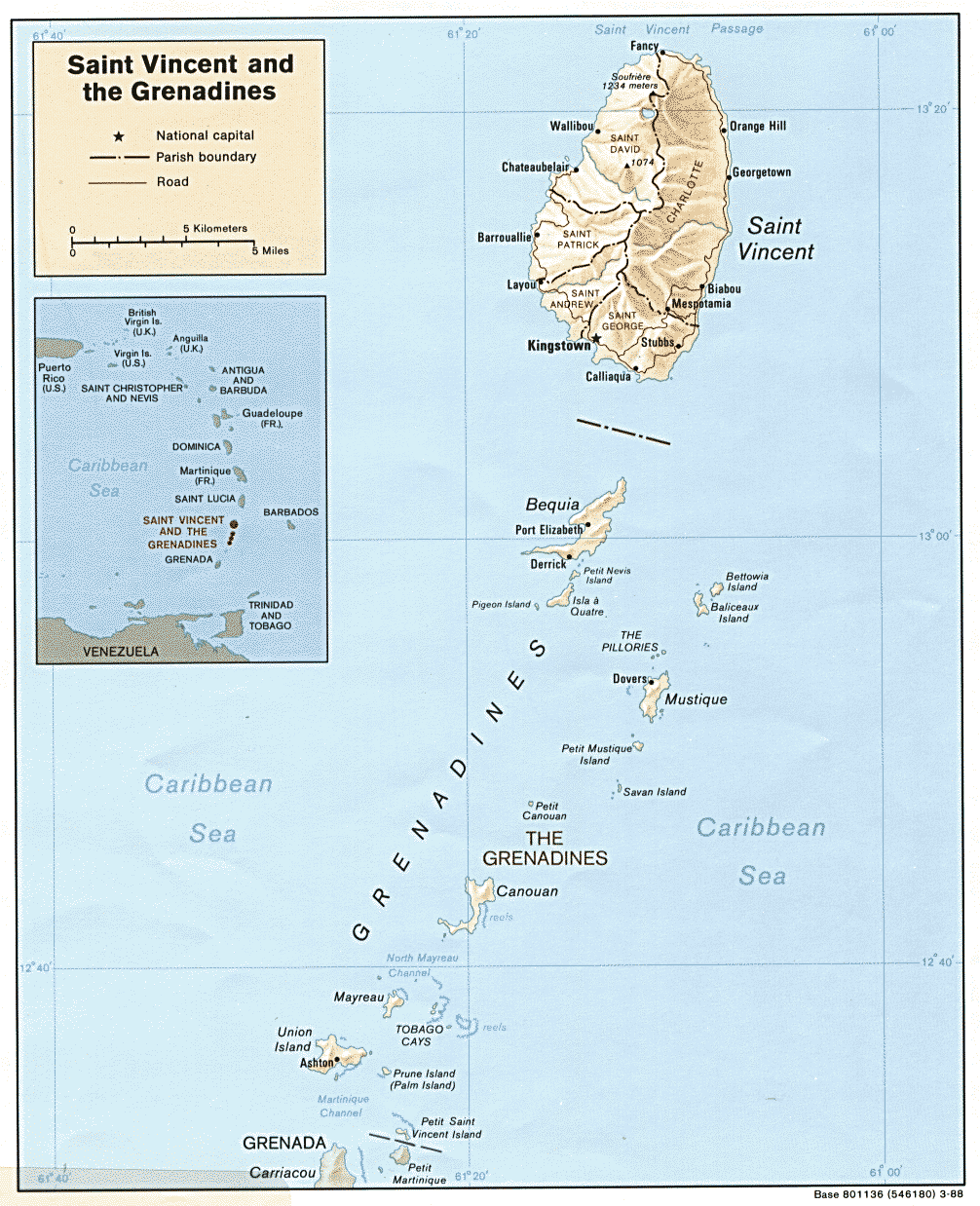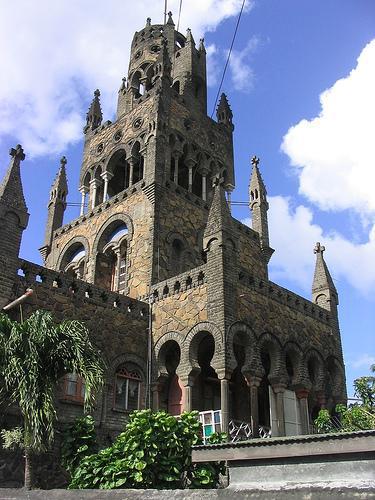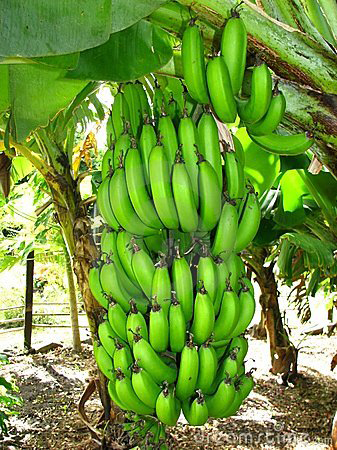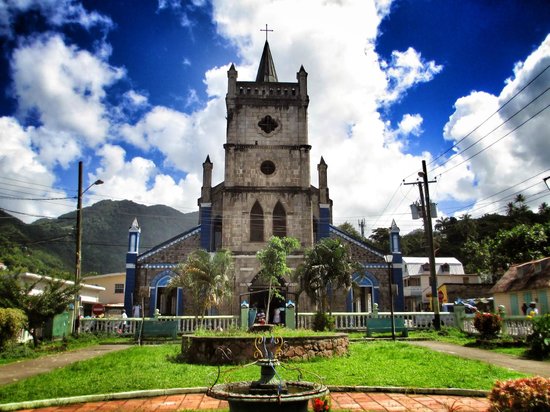Of all the
countries in the world, St Vincent and the Grenadines rounds out my top three
“Countries That Sound Like Band Names.” I’m not even sure what the other two
would be. But that doesn't matter now. And I say that knowing I’ve named most
of my cats after countries/cities in North Africa and have come up with the
best nick names in Neko Atsume. What do I know about naming things?
The name St Vincent
was given to the island by Christopher Columbus. It was named St Vincent after
his crew had landed there on St Vincent’s Day (January 22, 1498). The Grenadine
island chain was named after Grenada, the city in Spain. However, the Island
Caribs who were living there already (who called themselves the Kalina/Carina)
called the island Youloumain.
This island chain
is part of the Windward Islands of the Lesser Antilles in the southern section
of the Caribbean. The island of Saint Vincent is the northernmost island (which
is actually a volcano—La Soufrière is the highest peak) and the Grenadines are
spread out south of it. Only the northern two-thirds of the Grenadines belong
to Saint Vincent & and the Grenadines; the bottom third belongs to Grenada.
The country is south of Saint Lucia, west of Barbados, and north of Grenada. In
total, there are 32 islands and cays (but only nine are inhabited). Because
it’s located in the Caribbean in the Hurricane Belt, it also has a tropical
climate.
The Caribs who were
living there did everything they could to ward off the Europeans – but they
eventually did come in 1719. However, Africans who were either shipwrecked or escaped
slavery flocked to Saint Vincent; they were called Black Caribs and when they
intermarried with the Island Caribs, they were known as Garifuna. The French
were the first to arrive, but they handed over control to the British after the
Treaty of Paris was signed. However, the French took it back for a few years
until the Treaty of Versailles gave it back to the British. Things started to
escalate between the British and the Black Caribs until the Black Caribs (with
support from the French in Martinique) began an uprising against the British.
The British responded by rounding up around 5000 of them and transporting them
across the Caribbean to the island of Roatán (off the coast of Honduras) and
dumped them there. The British did establish slave labor until it was abolished
in 1834. The mid to latter part of the 1800s bought along waves of Portuguese
(Madeira) and East Indian immigration. The La Soufrière volcano erupted several
times during the 19th and 20th centuries, leaving behind
devastation for the people who live there. For a while, the British tried to
lump many of its Caribbean holdings into one country to be able to administer
to it easier. Or so they thought because hardly any others thought that was a
great idea. The island chain was finally granted its independence on October
27, 1979 (exactly one day before I entered into this world). Not only has Saint
Vincent and the Grenadines survived volcano eruptions, but it’s also survived
many hurricanes.
Kingstown is the
capital and located in the southwest corner of the island of Saint Vincent. With
only 16,500 people, the city is nestled into steep hills that surround it. Interestingly
enough, the islands are known for its breadfruit, and Captain Bligh (the same
one from Mutiny on the Bounty) is
credited with bringing the breadfruit seeds to Saint Vincent from the South
Pacific. The city itself was founded in 1722 by the French, but the British
ruled there for a little less than 200 years. Its botanical gardens are among
the oldest in the Western Hemisphere.
 |
| Wallilabou Bay, where parts of Pirates of the Caribbean was filmed. |
Banana production
is probably the biggest agricultural product, along with plantains, wheat, and
manioc (cassava). However, damaging storms often wreaks havoc on crops and
often causes hardship in crop production and sustainability. Part of the Pirates of the Caribbean movies was
filmed on the islands, which has brought a few more tourists to the area.
Tourism in Saint Vincent and the Grenadine still could be ramped up more, so if
you’re looking to visit someplace less “touristy,” this would be a good option.
Over 80% of the
islanders here belong to some kind of Christian denomination (mostly Anglican,
Pentecostals, Methodists, Seventh-day Adventists, and Baptists). There are a
few other denominations represented as well. Because of immigration, there are
some non-Christian religious followings as well, mostly as Rastafari, Islam,
and Hindu.
While English is
the official language, most people speak Vincentian Creole. Creole is spoken in
the home, while English is used in the government, education, religion, etc.
Vincentian Creole is an English-based Creole, with elements from French,
Antillean Creole, Spanish, Portuguese, African languages (Wolof, Fula), and
Garifuna.
Years ago, I
started getting into coin collecting, and especially world coins. I mostly
bought them off of eBay, but some I had held onto for years. So, I had bought
some coins that were part of the Eastern Caribbean Dollars. Saint Vincent and
the Grenadines uses this currency, along with five other island nations
(Antigua and Barbuda, Grenada, Dominica, Saint Lucia, and Saint Kitts &
Nevis) and two British overseas territories (Anguilla and Montserrat). It’s
pegged to the US Dollar, but based on the Eastern Caribbean Central Bank,
headquartered in Basseterre, St Kitts. The thing I find fascinating about
looking at world coins and currency in general is the variety of shapes and
materials they choose to use and what designs they use. US Currency is boring.
It vastly portrays politicians in the common in-use currency (yes, there’s the
Susan B. Anthony and Sacajawea dollar coins, but people rarely use them). Granted, pictures of the
Queen aren’t all that exciting either… unless you’re the Queen, I suppose.














